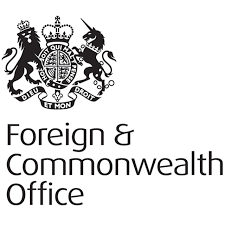PRESS RELEASE : Free schools – 55 to open this month – twice as many as this time last year [September 2012]
The press release issued by the Department for Education on 3 September 2012.
The government has today announced that 55 new free schools will open this September. The first 24 free schools opened in September 2011 while a further 114 have been approved to open in 2013 and beyond.
Free schools aim to achieve higher standards and offer a genuine alternative. They are funded by the government but have greater freedoms than local authority-run schools. They are run by teachers – not local councils or Westminster politicians – and have freedom over the length of the school day and term, the curriculum and how they spend their money.
The schools opening this month include:
- Dixon’s Music Primary Academy, in Bradford, which is the first specialist music primary school in England.
- Everton in the Community Free School, on Merseyside. The alternative provision school is being run by Everton Football Club and will cater for pupils aged 14 to 19 not in mainstream education.
- Bilingual Primary School, in Brighton & Hove, will be the first bilingual Free School in England, specialising in English and Spanish.
- School 21, in Newham, east London, is a teacher-led all-through Free School, including a sixth-form, in an area of significant deprivation. One of the founder members, and the executive head teacher, is Peter Hyman, previously a speech-writer for ex-Prime Minister Tony Blair.
- Rosewood Special Free School, in Southampton. A special school for children who have Profound and Multiple Learning Disabilities.
- Tiger Primary School, in Maidstone, Kent, where all children will learn Mandarin and a musical instrument.
- Perry Beeches II The Free School, in Birmingham, is a new 11-18 Free School set up by an existing outstanding secondary school, Perry Beeches The Academy. The academy’s head, Liam Nolan, turned round the school’s performance from 21% of pupils achieving five A* to C GCSEs including English and maths in 2007 to 77% this year.
- London Academy of Excellence, in Newham, east London. This is a sixth-form free school which is being run by eight leading independent schools including Brighton College and Eton College.
Of the new free schools opening this September:
- 19 are primary schools, 19 are secondary schools and seven are all-age schools. There is one 14-to-19 school and one 16-to-19 school. Five are alternative provision schools – the first free schools of their type – and three are special schools.
- The schools are spread across England. They are primarily concentrated in areas of deprivation or areas where there is a shortage of school places. 25 of the 55 schools are located in the most deprived 25% of communities in the country. 33 of the schools are in areas where there is need for more school places.
- 12 have been set up by teachers, 19 by parent or community groups, 9 by charities and 13 are set up by existing education providers. Two existing independent schools will join the state sector as free schools.
Education Secretary Michael Gove said:
Every child should have the choice to go to an excellent local school. These new schools have been set up by idealistic people who are determined to give parents the kind of choice that only the rich can currently afford. The first 24 free schools are enormously popular and I expect this second wave to be equally successful.
Liam Nolan, executive head teacher of Perry Beeches II, Birmingham, said:
This is a fabulous opportunity for us to expand our brand of success into a new community and to work with a new group of young people in the heart of Birmingham. This is one of the beauties of free schools, that the very best schools can extend their outstanding practice.
Marina Gutierrez, Chair of the Bilingual Primary School Trust, Brighton, said:
I am delighted that this project has now become a reality and that Brighton & Hove’s children will have bilingualism as an educational choice.
Free schools have proved hugely popular with parents. All 24 which opened last year have filled, or almost filled, all their places for this year. Many have expanded to meet demand and many have large waiting lists.
New York charter schools, one of the inspirations behind free schools, have been shown to substantially narrow the attainment gap between rich and poor – by 86% in maths and 66% in English. In Chicago they halve the achievement gap between inner-city students and their wealthier suburban counterparts.
In England academies, which have the same freedoms as free schools, improve at a faster rate to state secondary schools – between 2010 and 2011 the proportion of pupils achieving five or more GCSEs at A* to C including English and maths rose by 5.7 per cent in academies, compared to 3.1 per cent in state secondary schools.
This press notice relates to England only.

